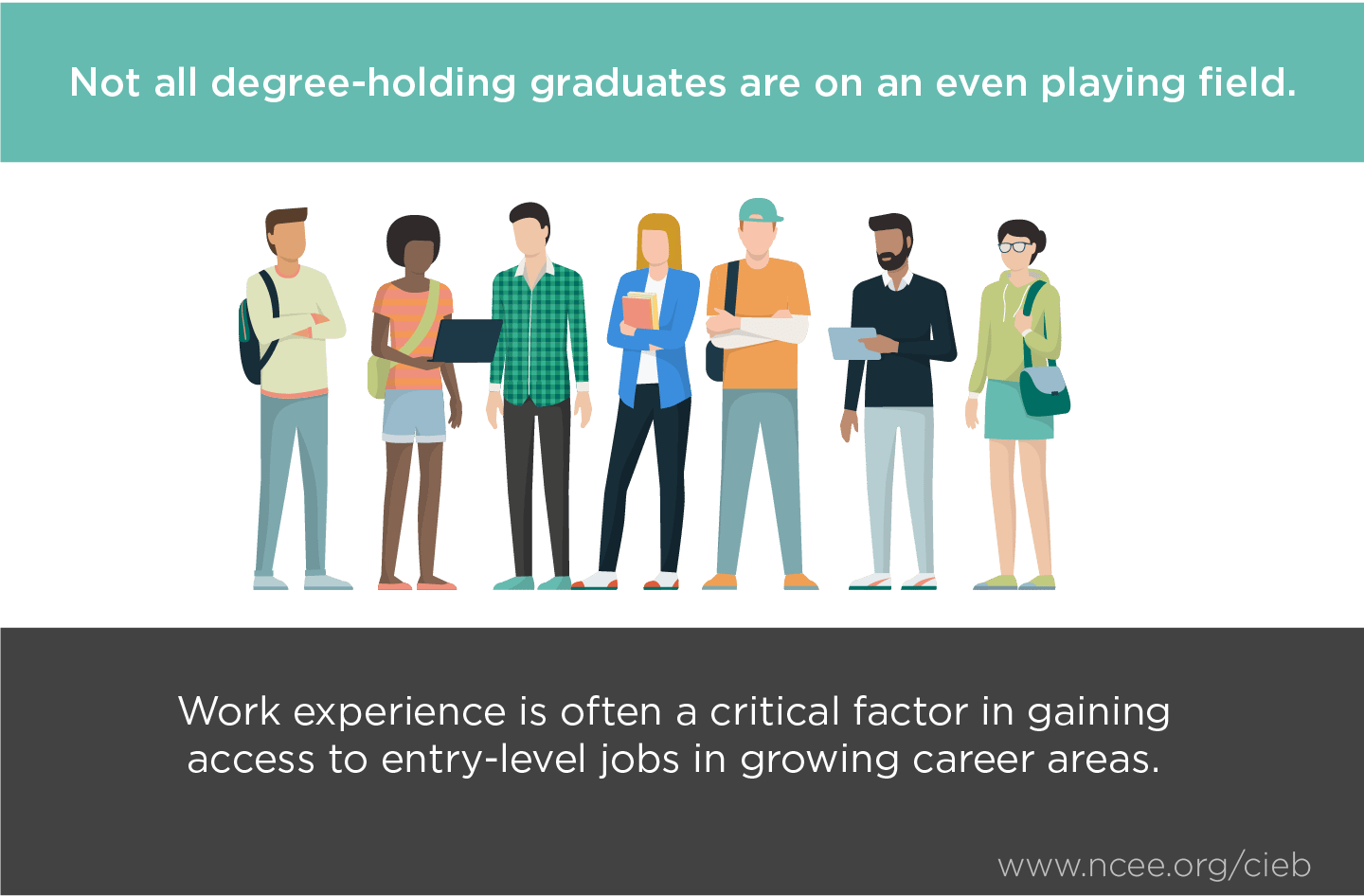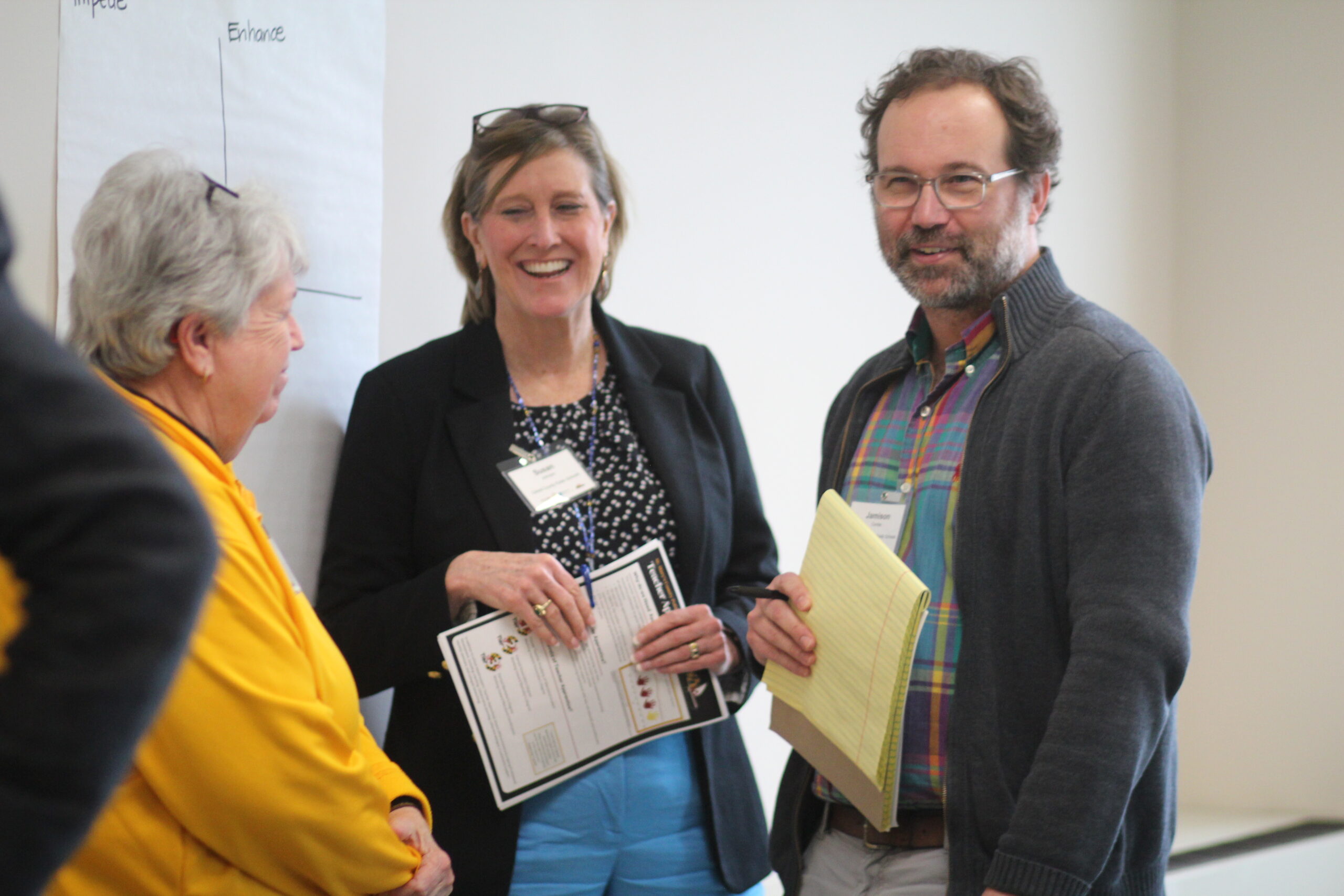
By Gretchen Cheney
College graduates in the class of 2022 will enter a strong job market, thanks in part to the worker shortages many employers are facing. But not all degree-holding graduates are on an even playing field. Work experience, in addition to college, is often a critical factor in gaining access to entry-level jobs in high-growth career areas. Work experience also helps young people identify career paths of interest and develop employability skills.
A new report from Georgetown University’s Center on Education and the Workforce finds that lower-income college students are more likely to work in retail, food service and other lower-skilled positions that offer flexible shifts and longer hours that can help them cover their living costs. Many of these students lack the time or the connections needed to identify and secure jobs that relate to their field of study and connect what they are learning in the classroom to real-world job tasks. Higher-income students on the other hand are more likely to find jobs and internships that enrich their college experience, help them build professional connections, and set them on a path towards a career.
This disparity has long-term impacts. For one, students who work more than 20 hours a week are more likely to do poorly in their classes and are at greater risk of dropping out or taking longer to graduate. Those who do manage to graduate are not best set up for access to the more prestigious, well-paying jobs and careers. They lack the professional capital that their higher-income peers have been able to cultivate through career-related experiences.
As a result, according to the Georgetown report, many young adults struggle to move into good jobs that pay decent wages by their 30s. The authors suggest that paid work-based learning opportunities would give disadvantaged students a leg up in developing in-demand skills and building a portfolio of learning and earning experiences that will help them to secure a high-wage job and career.
Some countries with top-performing education systems are structuring experiences that combine learning with paid work to intentionally help more students make a successful transition into the labor market. Examples include Singapore’s Earn and Learn program which targets recent college graduates and provides a structured work-study program to help them transition into their careers. As part of its latest vocational education and training reform, Finland has increased opportunities for students to take part in paid apprenticeships at workplaces to give them the kind of hands-on experiences they need to prepare for and secure good jobs in their chosen fields.




